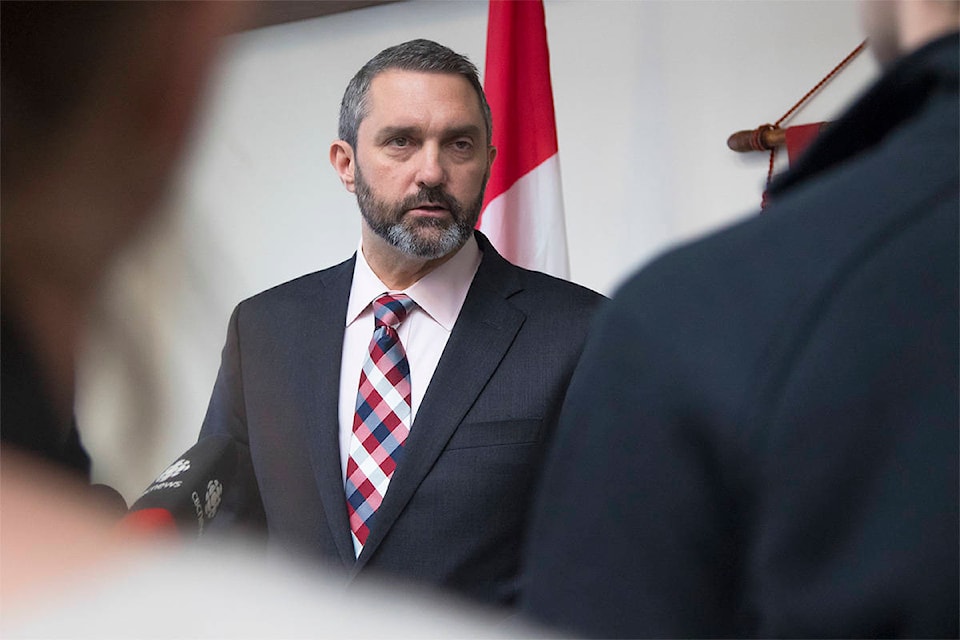In a bid to increase security in the North, the federal government wants to grow the military, according to its northern policy framework.
“Canada will enhance the Canadian Armed Forces’ presence in the region over the long term by setting out the capability investments that will give the Canadian Armed Forces the tools they need to help local people in times of need and to operate effectively in the region,” it says.
The framework, released on Sept. 10 — roughly six weeks before the federal election — is characterized as a roadmap for future collaboration among governments and representatives. It is to shape priorities through 2030, it says.
“It is hoped that this strategy, being co-developed with the people of the North, will more effectively reduce the socio-economic and living standard gaps, between the people of the North and Arctic and the rest of Canadians,” Yukon MP Larry Bagnell said in a news release.
Prime Minister Justin Trudeau announced rolling out such a plan roughly three years ago.
Yukon Premier Sandy Silver told the News it’s a “good starting point.”
“Our government, we’re gonna be emphasizing the importance of northerners being at the forefront of decisions that are affecting the North,” he said.
“All of the northern premiers agree that a strong Canada includes a vibrant and a well resourced Arctic and northern region.”
Security is built into that, Silver said.
Other objectives to bring this about include more surveillance, developing culturally appropriate policing and enhancing the capacity of the Canadian Coast Guard, the framework says.
The effects of climate change are opening up the area, the framework says, and, coupled with improved technologies, “the region is emerging as an area of international strategic, military and economic importance, with both Arctic and non-Arctic states expressing a variety of interests in the region’s potential.”
Bob McLeod, premier of the Northwest Territories, has been pushing for a beefier military presence in the region this year.
Silver said that shoring up security measures is a positive. More money should be allocated for the Canadian Rangers in the Yukon, he added.
“Our Rangers are our first line of defence, and if you’re going to put any money into protecting the North, you need to put money into our Rangers. They’re also positive male and female influences in young people’s lives. Getting people out on the land, extending people’s knowledge of how to survive and thrive in harsh conditions outside of the communities.”
The framework, which replaces 2009’s Canada’s Northern Strategy, has been green lit by the six territories and provinces and over 25 Indigenous organizations.
“In our shared future,” it says, “Canada’s Arctic and North will no longer be pushed to the margins of the national community.”
There are seven additional priorities that make up the framework, including infrastructure, health, bolstering regional economies and conservation of northern flora and fauna.
It’s unclear when the framework will be fully implemented. Officials with Crown-Indigenous Relations and Northern Affairs didn’t immediately return requests for comment.
The framework lays out plans to address health problems, including ending poverty and homelessness and reducing suicides.
“There are unacceptable gaps in health and social development outcomes between Arctic and northern Indigenous peoples and most other Canadians,” the framework says. “The poor health outcomes in the region are directly linked to both inadequate access to treatment options and to serious social problems …” like housing shortages, high rates of incarceration and unemployment.
Improving infrastructure is another priority. The framework acknowledges “significant transportation infrastructure deficits in the region.”
To turn this around, objectives include investments in major projects, internet for all residents and strengthening infrastructure so that it’s able to withstand a changing climate.
Each territory is to submit its own chapter outlining specific priorities. Nunavut and N.W.T. have ones available online; the Yukon doesn’t.
Silver said one is coming, but couldn’t say when it would be published.
He said that there will be a chapter from the Yukon government and a separate one by First Nations. They will be distinct but overlap.
“We’re speaking with the First Nations governments. We have similar concerns and needs.”
There is a pan-territorial chapter that builds off a sustainable development plan between the territories released in 2017. Its pillars include investments in transportation infrastructure and renewable energy and economic diversification.
Contact Julien Gignac at julien.gignac@yukon-news.com
